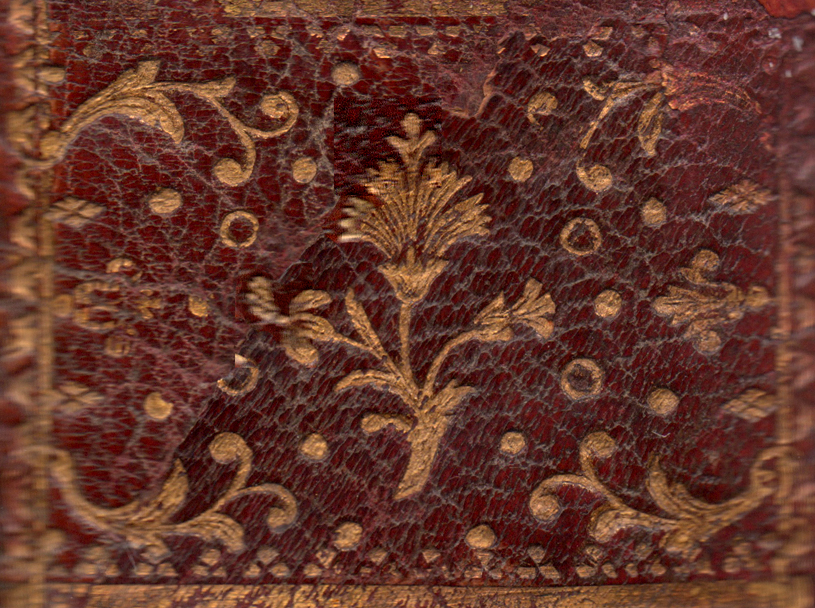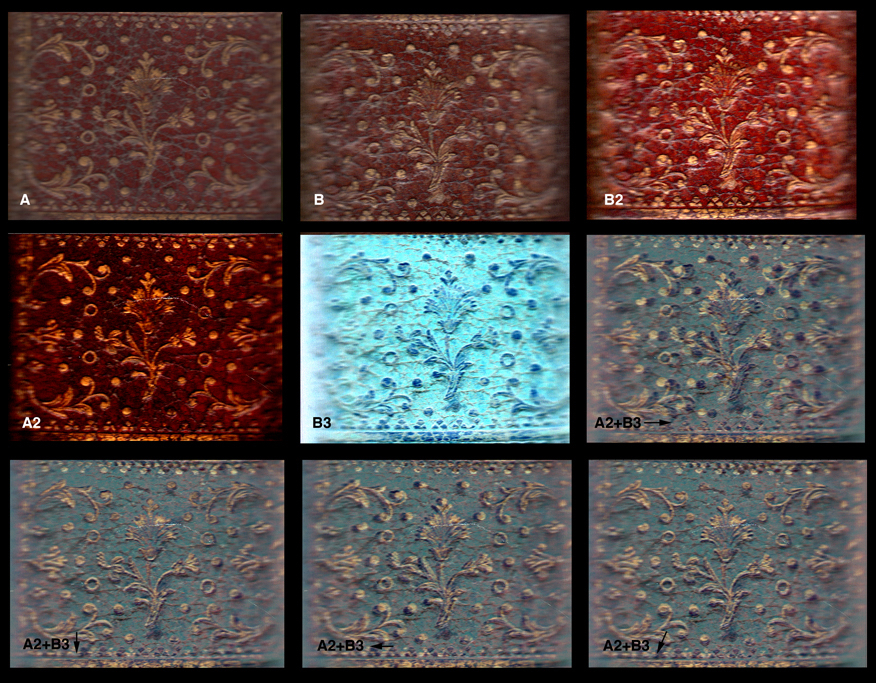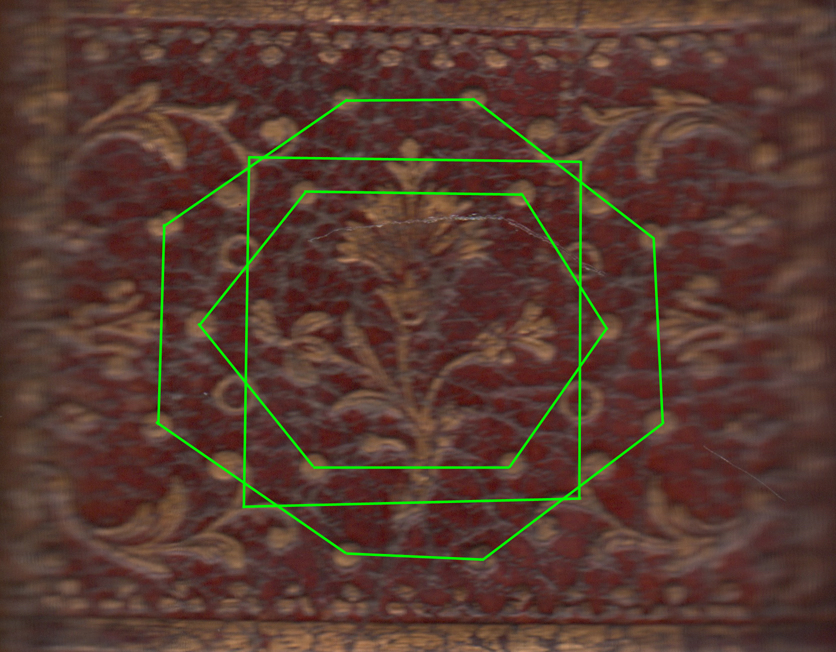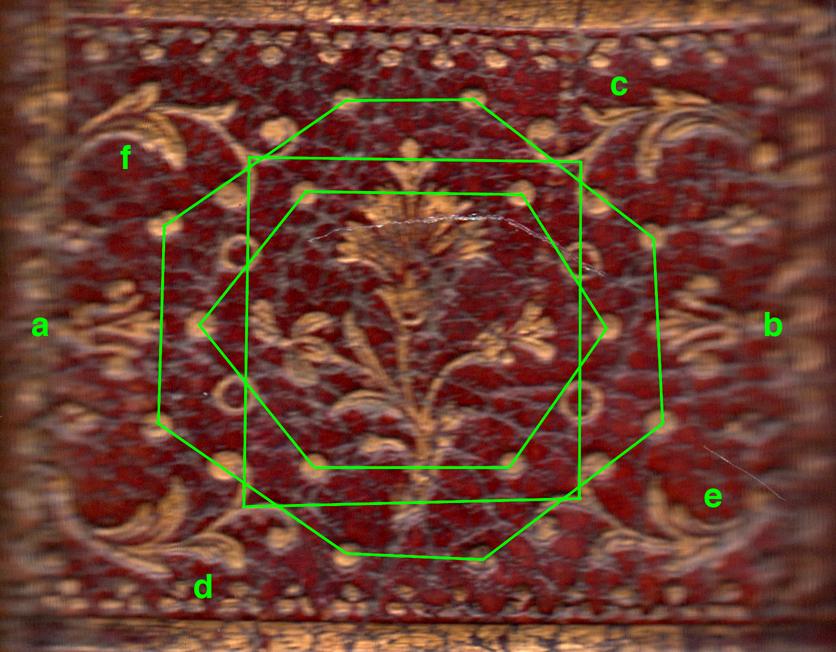


| On this page I wanted to show some of the MM Binder imprints that I have not seen before until this 1768 Office, I was going to leave the spine till last but then I remembered that the central fleuron in the spine compartments is new. Only the gold tooling in the top compartment (shown above) remained clearly visible, unfortunately some of the imprint is damaged and I set about trying to rectifying this with bits from the other compartments. In the middle of this exercise I stumbled upon something I wasn't expecting, it seemed to me that the dots and embellishments around the central fluron were the same in every compartment. To test this I set up an elaborate overlay experiment, the results of which are shown in Comparative Diagram 1. |

| In this overlay experiment you will see that compartment "A" differs slightly from "B" in terms of leather texture also in high resolution you will notice a scratch on "A" that may have been something on the glass of the scanner. I increased the contrast of A to make it brighter, it becomes A2. I did the same with B to produce B2 and then I inverted the image to make the B3 overlay. In the enlargement you can see that these dots and rings are not randomly placed, they match up very closely. I tried shifting the overlay left and right to see if there was any dot noticeably out of alignment with the dots below. To my amazement not only the dots lined up but also all the other imprints also. This indicated that the entire spine compartment was actually decorated with a plaque, here I hesitated as this seemed an unlikely possibility. Then devised another experiment to test this. |


| In Comparative Diagram 2, I have connected the dots as well as other critical points in the corner imprints. This produces rather compelling evidence that these imprints are not placed randomly at all! This is by no means a first, to decorate a spine compartment with a small plaque, however I must admit its something that I have not been on the watch for. After these tests it seemed almost certain that this was some sort of plaque, it then dawned on me that if this was true then the imprints in the corners and side might not be the usual arrangement of pairs of tools reversed or a single tool used twice. In the diagram below I have enhanced the contrast and sharpness to better view the imprints which are anyway on the edge of the scanner focus. We see first of all that the imprint at "a" is not identical to the imprint at "b" as it normally should be. The imprint at "c" is not the same as "d", some parts are thicker. It is the same with "e" and "f" these should be identical, but are not. Thus we see certain proof that the whole compartment was not made up of individual tools as was the norm, but instead the compartments have been decorated with a unique plaque. One would think that it would be expensive to make plaques unless you were planning on decorating a lot of books exactly the same size. The Dubusson's used plaques for their work with the many volumes of the Almanach Royal. A Royal binder might be asked to decorate many copies of a single publication, in which case plaques would be a time saver. |

| On the next page we will continue our search for new tools. |
|
click here to return to the INDEX of new (2017) pages. click here to return to the HOME page. see below links to previous work |
| Even experts are sometimes wrong, before you spend thousands on a book, please do your own research! Just because I say a certain binding can be attributed to le Maitre isn't any kind of guarantee, don't take my word for it, go a step further and get your own proof. In these pages I have provided you with a way of doing just that. |
| Virtual Bookings, created by L. A. Miller | return to the Home page of VIRTUAL BOOKBINDINGS |